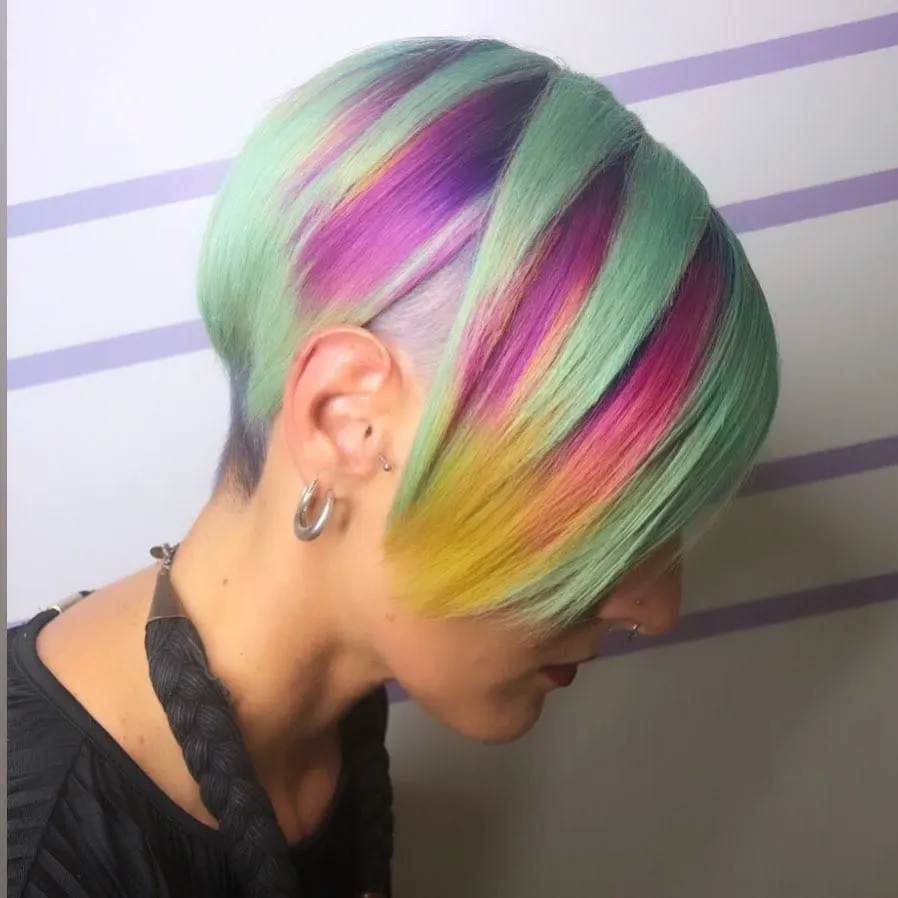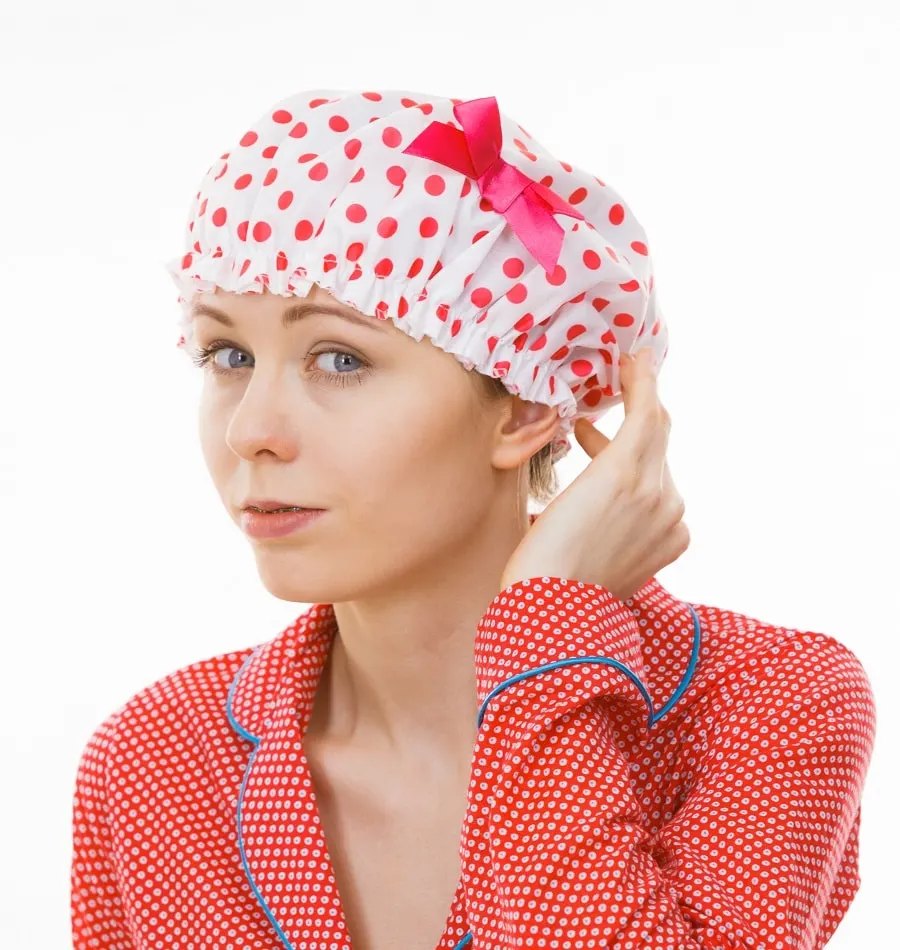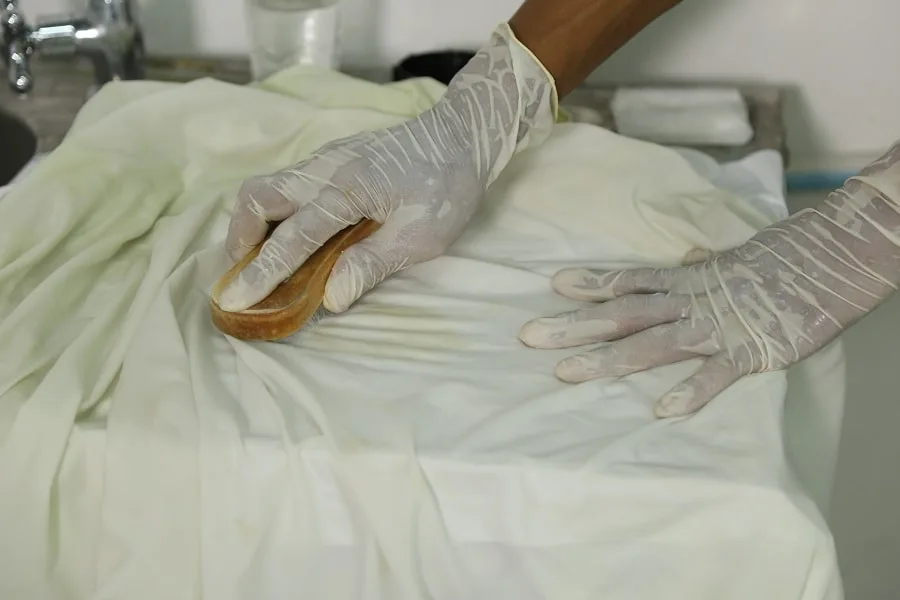
How to keep your hair color from bleeding onto pillows – HairstyleCamp
Want to change your hair color but not the color of your pillowcase? you are not alone. With the superior coloring talents of box dyes, everyone is asking how to keep hair dye from bleeding onto a pillow.
Proper preparation of the hair before dyeing, extensive drying with a towel after a cold and exhaustive wash after dyeing, extensive use of hair sealing products, wearing a protective head covering and minimizing the potential for sweat may prevent hair dye from bleeding onto the pillow.
In this article, we detail why hair dyes can bleed and for how long, the measures you can take to prevent bleeding, and how to save all fabrics that suffer from stains in the worst case scenario.
Why does hair dye bleed?

The most likely culprit behind bleeding hair color is applying too much heat to freshly colored hair. Washing in too hot water or using a A tool like a clothes dryer after washing Instead of drying a towel can activate bleeding.
broke in the heat Open nails for hair Serves as the outermost protective barrier for each strand. Nails with openings create an opportunity for color to bleed.
Unhealthy hair can also lead to bleeding color due to existing damage to the nails. Consistent application of harsh products with strong chemicals or using a Semi-permanent color that does not completely penetrate each strand are additional factors that contribute to the bleeding color.
How long does hair dye bleed?
Hair dye can bleed up to 72 hours after application. The time frame for potential bleeding varies depending on factors such as the quality, style and color of the paint.
Some types will settle within 24 or 36 hours, but others are vulnerable for several days, with 72 hours being the maximum.
How can I prevent my hair color from bleeding onto the pillow?
Certain contraceptives can reduce the amount of bleeding from hair coloring. Here are the steps you can take to prevent hair dye from bleeding onto a pillow.
Step 1: Prepare your hair
Hair with damage is less able to retain color than hair that is healthy and strong. Before applying hair color, improve the health of your hair with consistent trimming, moisturizing treatments and avoiding tools that apply heat.
Prepare your hair with a clarifying shampoo a few days before the dyeing process. Lightening treatments remove excess build-up that can interfere with how strands retain their color.
your mother Hair feels noticeably dry, add a deep leave-in conditioner after the clarifying product. You can also combine hair color with a protein filler consisting of keratin to strengthen the strands and maintain the color, minimizing bleeding.
DIY protein fillers made with protein-rich ingredients like egg whites, avocado, and Greek yogurt can be used as protective hair masks before and between color treatments.
Spend the time and effort to properly Prepare your hair before coloring This will strengthen the strands and reduce the possibility of color bleeding. Maintaining overall hair health is essential when coloring is part of your routine.
Step 2: Skip the hard colors
Natural hair oils are essential for healthy nails. Products containing harsh ingredients such as ammonia, parabens and alcohol break down natural oils, weakening the nails that preserve hair color.
Instead, look for gentler color products that combine natural ingredients and moisturizers like aloe vera, oat milk, Coconut oil. Avoiding harsh hair products in general will help reduce the risk of color bleeding.
Step 3: Rinse thoroughly with cold water
Washing your hair after a dye job can feel tedious, but you need to be patient and make sure your hair is free of any excess dye.
Not all of the dye penetrates during the process, leaving a detached surface layer that will transfer to the pillow, skin, clothes, and anything else it comes in contact with. Washing thoroughly after dyeing is one of the best defenses against dye bleeding on a pillow.
cold water Seals the hair cuticle and wear the most color. Washing in hot water has the opposite effect. It opens the nails and releases color that causes bleeding and accelerates color fading. Cold rinse after a Color treatment Maintains the integrity and vitality of the color.
Step 4: Dry well with a towel
The “with a towel” part of this step is critical. We know that heat from washing endangers hair color by opening the cuticles, and heat from a dryer has the same negative effect. Warm temperatures equal bleeding color. Remember to towel dry instead of rubbing.
The humidity swells the hair cuticles, making room for the color to bleed out. Getting into bed with freshly dyed hair that is still wet guarantees bleeding on the pillow.
Step 5: Apply colored sealer
Color sealing products strengthen the nails to preserve the color. After completing a thorough rinse with cold water to eliminate excess color, use a color sealer and rinse before applying the hair color co-conditioner.
Color sealants keep the color by locking the hair cuticles. Color sealing serums, creams or sprays can be used. Apple cider and vinegar combinations are also popular DIY sealers because of their acidic properties that effectively balance hair’s pH levels.
Find a color sealer that suits your hair and apply it after a fresh color job to prevent bleeding.
Step 6: No sweat
Wet hair leads to color bleeding, and that includes hair wet from your sweat. It’s frustrating to spend all that time drying your fresh hairstyle only to still wake up with color stains on your pillow from sweating in your sleep.
Some ways to reduce the possibility of night sweats leading to color bleeding include lowering your bedroom temperature and wearing minimal or light clothing to bed.
Step 7: Add a barrier

Applying a paint sealer may not be enough to fully protect your pillowcase from the paint. You can take extra precautions by wrapping your pillow in an old t-shirt or towel you don’t mind staining for the first few nights after a fresh paint job to preserve your pillowcase.
Another option is to wear a silk bonnet or sleeping cap as a barrier between strands of new color and your bedding. Bonnets and sleeping caps require dry hair because moisture and the resulting hair dye can seep through the fabric and stain a pillowcase.
How to remove hair dye stains from pillowcases and fabrics

In case you came across our tips for preserving the color too late, here is an explanation of how to eliminate hair color stains.
Begin by gently spot cleaning the stain with a heavy detergent, using a soft brush. Intensive scrubbing deepens the color into fabric fibers. If you don’t have detergent on hand, high-performance dishwashing liquid can be used as a substitute.
Wash the pillowcase in cold water and soak it in bleach based on oxygen or chlorine for at least 8 hours. If the stain does not clear up after the first treatment, continue the process until it clears up.
Never put an item in the dryer that has color stains on it because the heat of the dryer will seal the stain into the fabric. To achieve the greatest success in removing stains, treat hair dye stains as soon as possible after they are noticed.
If the sheets have care instructions for dry cleaning only, do not try to remove the stain yourself, otherwise you risk causing further damage yourself.
Summary
Here are the steps you should take to minimize the risk of color bleeding:
- Prepare your hair properly and boost its health before the color treatment
- Do not use hair products that contain harsh chemicals that damage the nails
- Wash freshly dyed hair well using cold water
- Dry your hair with a towel completely before going to bed
- Use color sealing products after washing
- Do what you can to minimize overnight sweating that can trigger color bleeding
- Create an additional protective barrier between freshly dyed hair and your pillow by covering the pillow with an old shirt or towel, or by wearing a silk bonnet or sleep cap.